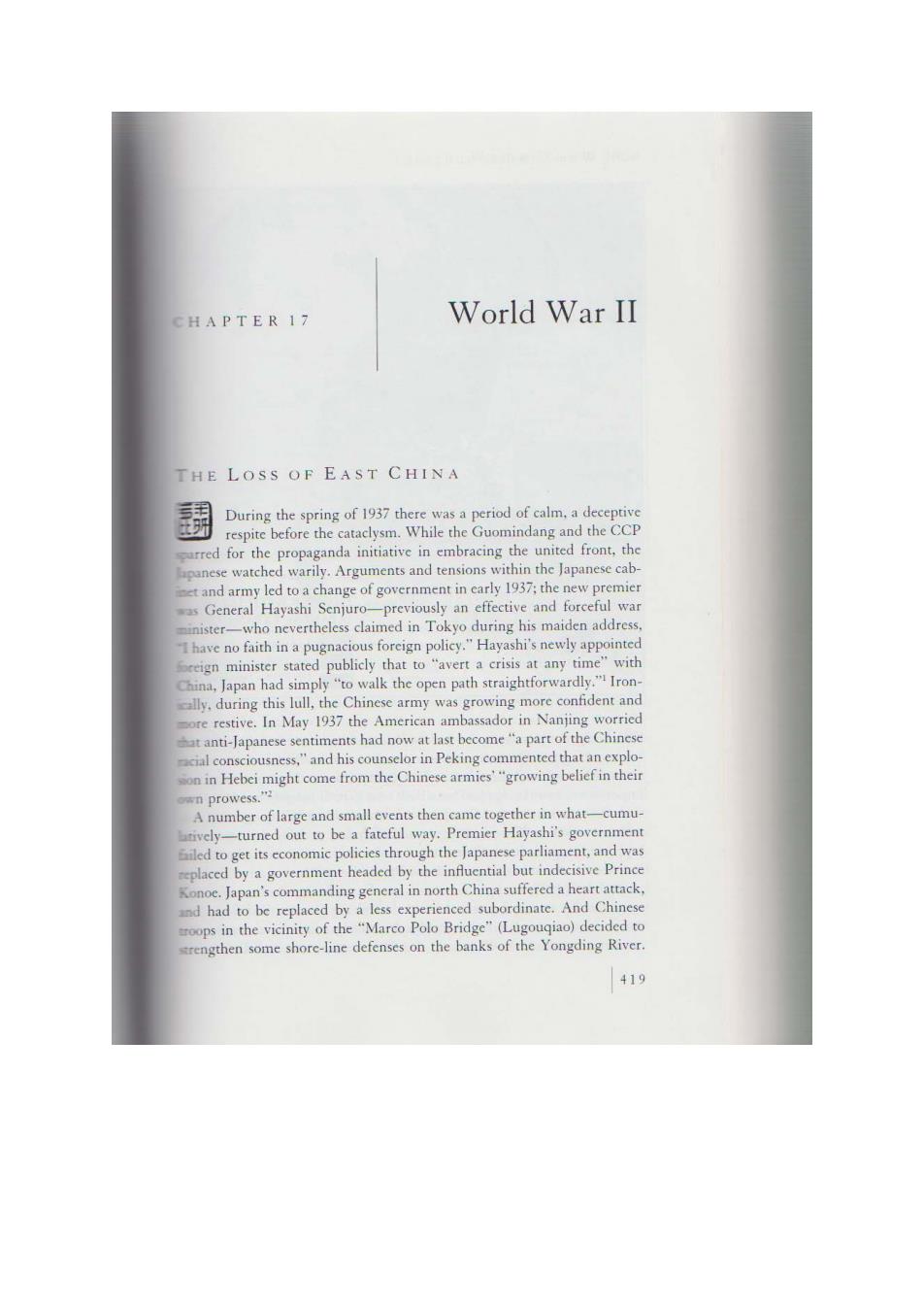正在加载图片...

CHAPTER 17 World War II THE LOSS OF EAST CHINA 翻 During the spring of 1937 there was a period of calm,a deceptive respite before the cataclysm.While the Guomindang and the CCP arred for the propaganda initiative in embracing the united front,the panese watched warily.Arguments and tensions within the Japanese cab- tand army led to a change of government in early 1937;the new premier s General Hayashi Senjuro-previously an effective and forceful war inister-who nevertheless claimed in Tokyo during his maiden address. Ihave no faith in a pugnacious foreign policy."Hayashi's newly appointed eign minister stated publicly that to "avert a crisis at any time"with China,Japan had simply"to walk the open path straightforwardly."Iron- lly,during this lull,the Chinese army was growing more confident and ore restive.In May 1937 the American ambassador in Nanjing worried atanti-Japanese sentiments had now at last become"a part of the Chinese al consciousness,"and his counselor in Peking commented that an explo- onin Hebei might come from the Chinese armies'"growing belief in their n prowess." A number of large and small events then came together in what-cumu- ively-turned out to be a fateful way.Premier Hayashi's government ied to get its economic policies through the Japanese parliament,and was placed by a government headed by the influential but indecisive Prince Konoe.Japan's commanding general in north China suffered a heart attack, nd had to be replaced by a less experienced subordinate.And Chinese oops in the vicinity of the "Marco Polo Bridge"(Lugouqiao)decided to rengthen some shore-line defenses on the banks of the Yongding River 419